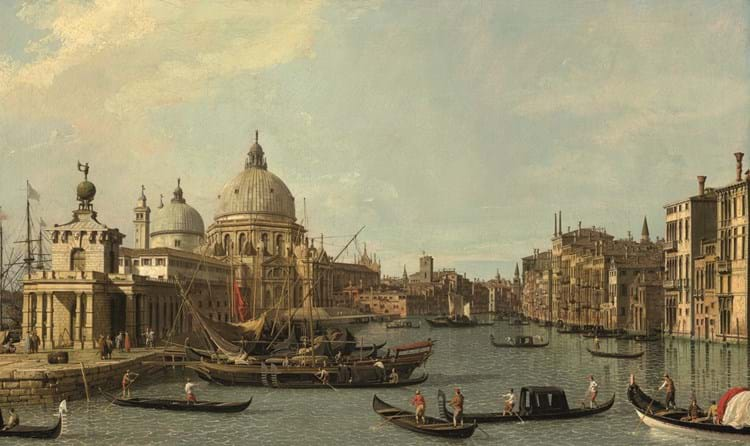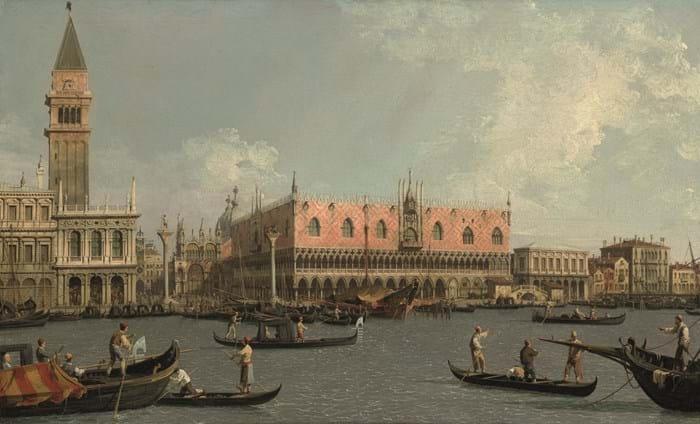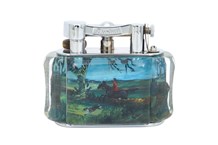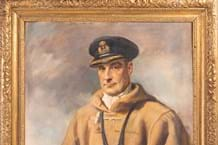
The Mouth of the Grand Canal from the East, one of a pair of vedute by Canaletto estimated £8m-12m at Christie’s.
With one depicting the mouth of the Grand Canal from the East and the other showing the Piazzetta and Doge’s Palace from the Bacino, the unpublished canvases were previously unknown to scholars but are very much in keeping with the artist’s works painted for English clients after 1720.
Measuring 18.5in x 2ft 7in (47 x 78cm), the oils on canvas here date from c.1734 and are described by Christie’s as in excellent condition.
Christie’s is selling the works on behalf of a private UK vendor and have placed an estimate of £8m-12m on the pair. The auction house has described the works as ‘comparable to the great sequence of views on the Grand Canal now in the Royal Collection, and the celebrated series at Woburn Abbey’.
The current auction record for Canaletto was set at Sotheby’s in 2005 when a larger view of the Grand Canal from Palazzo Balbi sold at £16.6m.

The Molo with the Piazzetta and the Doge’s Palace from the Bacino, one of a pair of vedute by Canaletto estimated at £8m-12m at Christie’s.
Provenance
The two works are believed to have been painted for an English patron for whom Joseph Smith, the merchant, collector and later consul in Venice, acted as agent.
Records survive of the payments John Russell, 4th Duke of Bedford, made between 1734-6 to Smith’s brother and London agent, John Smith, for the celebrated Canaletto series at Woburn.
It has been suggested by London dealer and Canaletto expert Charles Beddington that the current pictures were components of a set of four canvases commissioned in 1733 by the Duke of Bedford’s sister, Elizabeth Countess of Essex and dispatched by Smith the following year. Her husband, William Capel 3rd Earl of Essex, was appointed ambassador at Turin in 1732.
The choice of subjects suggests that Lady Essex may well have seen the two related works already ordered by her brother while these were still in Venice.
By 1939, the pictures were owned by Douglas Glass (1881-1944), the only son of James George Henry Glass (1843-1911), a distinguished engineer and a director of the Bengal Nagpur Railway Company, whose interest in Italy is reflected in the fact that he died in Naples rather than in his English residence.





